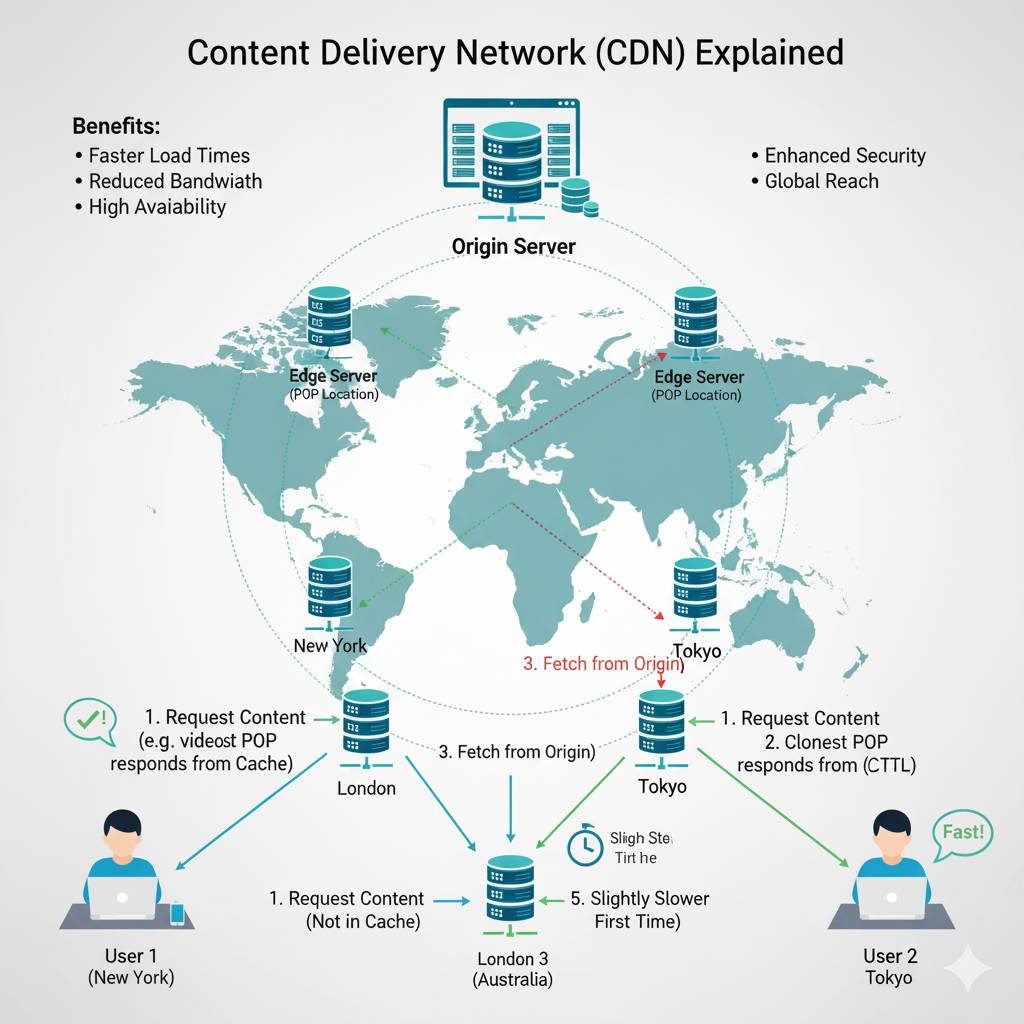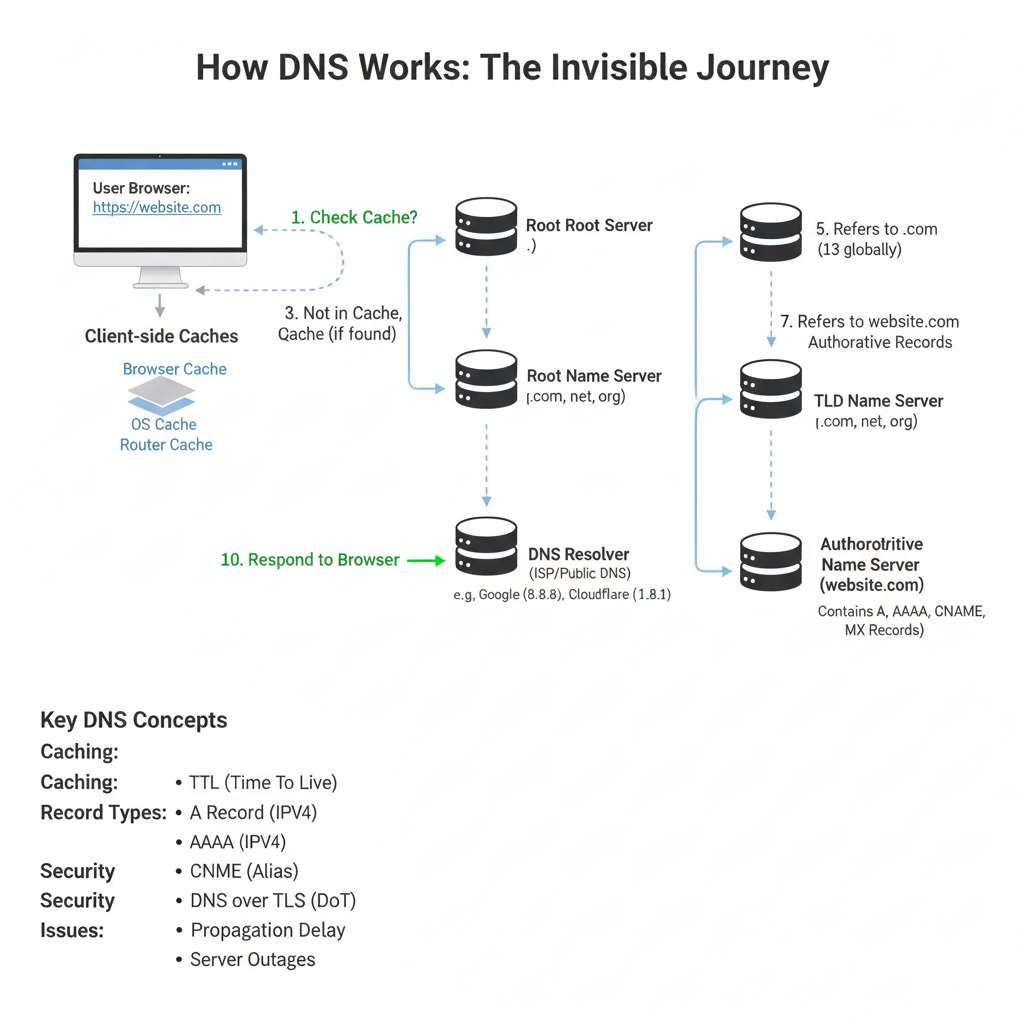Have you ever wondered why platforms like Netflix or Amazon load content almost instantly, no matter where you are in the world? A key component that makes this possible is the Content Delivery Network (CDN).
A CDN is a network of geographically distributed servers that store (or cache) copies of your website’s static content, such as images, videos, stylesheets, and scripts. These servers, also called edge servers, are located in Points of Presence (POPs) close to users. By delivering content from the server nearest to the user, CDNs significantly reduce latency and improve website performance.
When a user requests a file from your website, the DNS routes the request to the optimal POP location. If the requested content is already cached on the edge server, it is delivered directly. If not, the edge server fetches it from the origin server (the main server where your website is hosted) and then caches it for subsequent requests. This caching continues until the time-to-live (TTL) set in the HTTP header expires, typically around seven days.
Benefits of Using a CDN
Reducing Page Load Time
By delivering content from servers closest to the user, CDNs minimize latency and speed up page load times. Faster websites provide a better user experience and can improve search engine rankings.Lower Bandwidth Costs
CDNs reduce the amount of data that your origin server must transmit, saving bandwidth and lowering hosting costs. Cached content is served directly from edge servers, reducing repeated data transfer from the origin.Increased Content Availability and Reliability
CDNs distribute traffic across multiple servers, which allows websites to handle high traffic volumes and withstand hardware failures more effectively than a single server setup.Enhanced Website Security
CDNs protect against DDoS attacks and other threats by absorbing traffic spikes across multiple servers, reducing the load on the origin server. Many CDNs also provide HTTPS support, helping secure data in transit.Support for Global Audiences
By serving content from POPs near the user, CDNs ensure consistent performance for users around the world, regardless of their geographic location.
Popular CDN providers include StackPath, Akamai, Sucuri, Cloudflare (which offers a free tier), and cloud-based CDNs like Amazon CloudFront and Azure CDN. Choosing a CDN depends on your website’s requirements, such as traffic volume, content type, and budget.
In conclusion, a CDN is an essential tool for modern websites that want to provide fast, reliable, and secure access to content. Whether you are running a streaming platform, an e-commerce site, or a personal blog, implementing a CDN can improve performance, reduce costs, and enhance user experience globally.
Leave a comment
Your email address will not be published. Required fields are marked *



